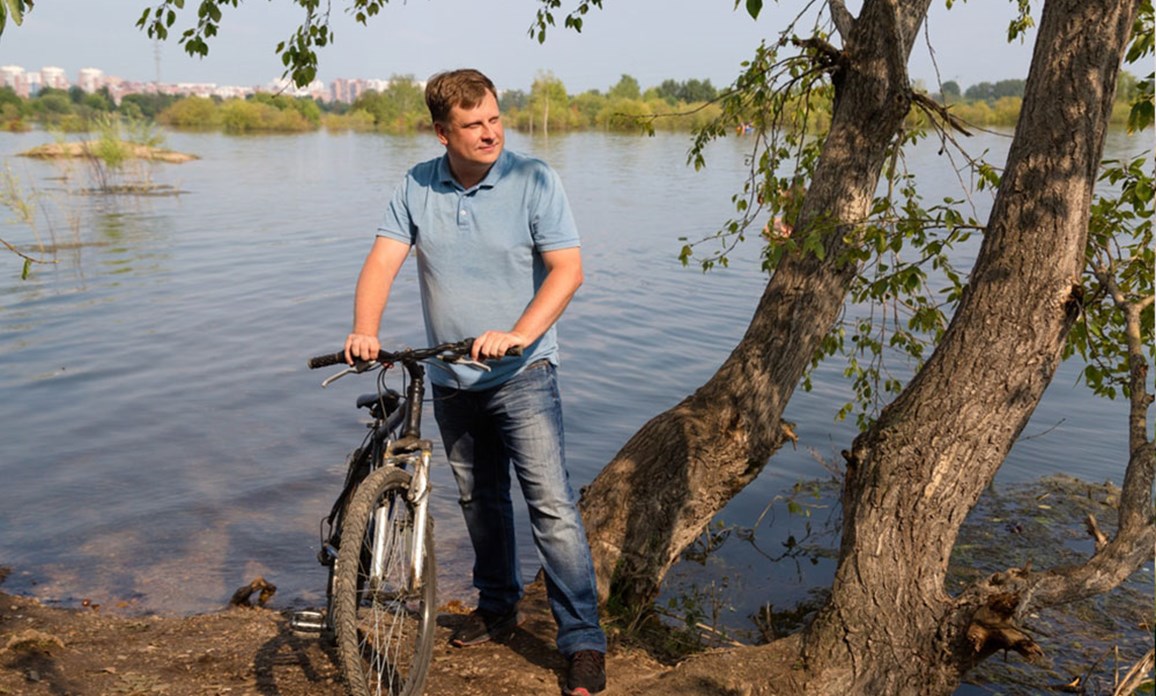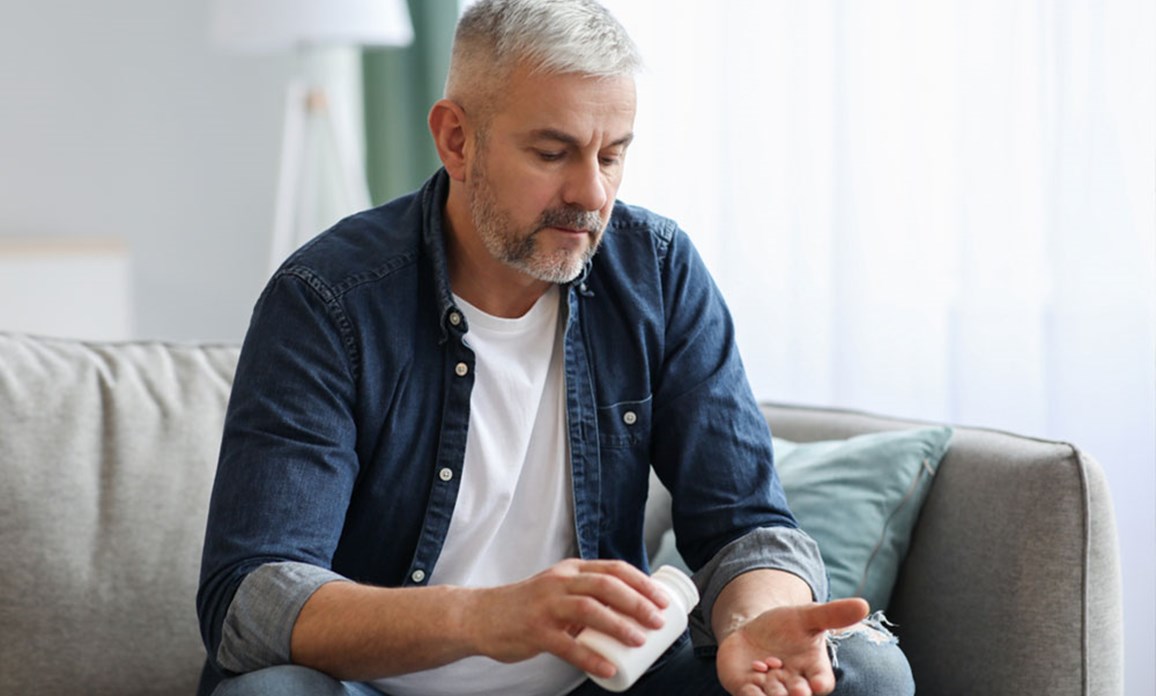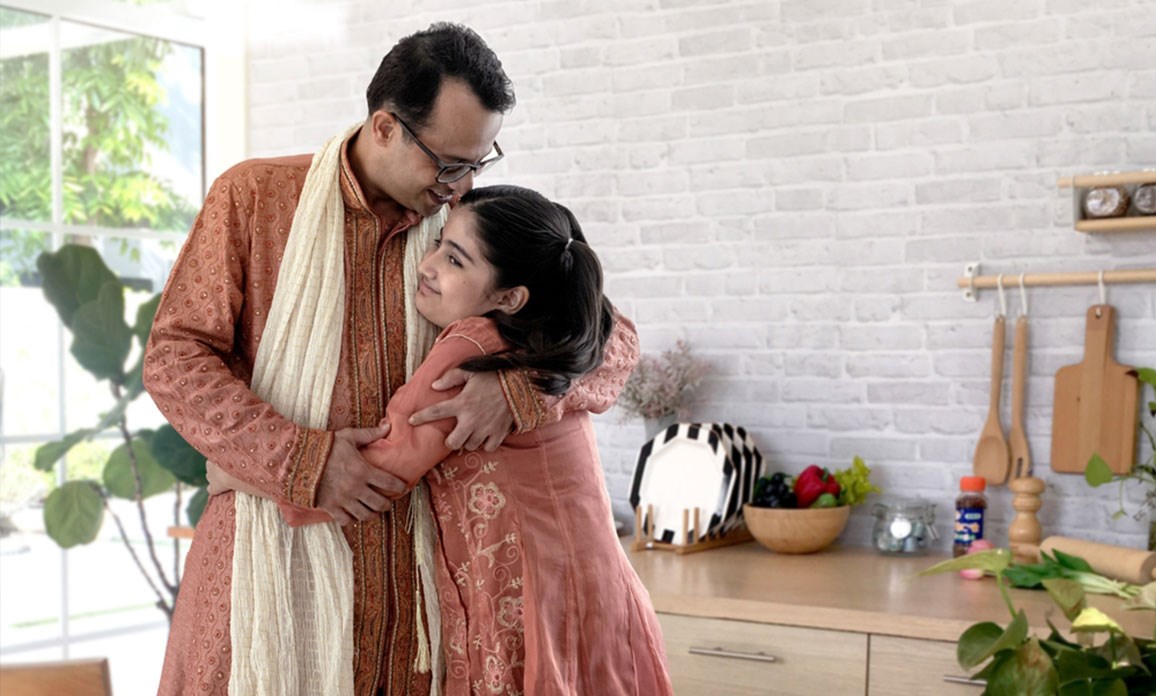Tim's Journey
Early signs and diagnosis
I have a family history of Parkinson’s on both my father’s and my mother’s side, so I had a feeling I might get it as far back as 10 years before my diagnosis. It made me more aware of any unusual symptoms – maybe once every two or three years I would get a tic or another strange sensation, and every such “symptom” would strengthen my conviction that I would eventually have Parkinson’s. But I never thought it would come as early as my late 30’s.
One day I went mountain-biking with my friend and when we took a break to catch our breath I noticed that my hand was shaking. I told my friend: Look at my hand, and he said I should get it checked out. So I did. My GP told me it was probably nothing, but he referred me to a neurologist anyway. I made an appointment for a neurologist in the city where I live, and the day of my appointment she had an intern or a med student with her. As soon as I walked into the consultation room she immediately told her, referring to me: Here you immediately see that there is something wrong. I hadn’t even said a word and she could already tell.
The diagnosis is a lengthy process with multiple stages. The neurologist first wanted to rule out a tumor, so she had me do a brain MRI scan, which came out clear. I guess that’s a good thing. She also referred me to a few more tests that could be done right away, and they all came back normal. Then she said: All right, it is most likely Parkinson’s Disease, but I need to refer you to a movement disorder clinic at a general hospital. Every such step takes time: you wait for your doctor’s appointment, you get referred to tests and scans, you wait for those, you get the results, you go back to the neurologist, they refer you to another doctor or another clinic. The whole process took a year until my diagnosis was final.
From that point on it was just a matter of getting used to “the new normal”. I had my diagnosis, I had my medication regimen, and I was referred back to a neurologist in the community for regular follow-ups. There were no more big news, no big surprises. It was just me learning to live with Parkinson’s.

Learning about my disease
I know that some people spend entire days on Google trying to learn everything they can about their condition. I never did. Sometimes, when you consult Dr. Google, you tend to get sucked into the worst possible scenario, and that wasn’t for me. Maybe the fact that my symptoms were still very mild during the first couple of years made it possible for me to tell myself that it was just a mild discomfort, nothing major.
I think that the hardest part is just accepting your new reality. Once I told myself: This is who I am now, tremor and all – things got easier. You take a step back, look at the big picture, and realize that it’s not as bad as you thought it was.
I did have to make a lot of adjustments though. One day, about three years after my diagnosis, I went mountain-biking and tried a jump over a rock, which I had done many times before. When I landed there was a lot of weight on my left hand, which was the one more affected by my symptoms. My hand slipped off the handlebar, which hit me right in the chest, knocking the air out of me. That was a nasty fall. I thought I had fractured some ribs. That was my first big Parkinson’s fall, and from that day on, I knew I couldn’t do any more jumps – because, after a jump, there comes a landing.
When I go riding with a group of friends I tell them in advance: I may have to take breaks, I may have to cut the ride short or skip parts of the route. You have to learn to let go, give yourself some slack. The benefits I get from staying active, both physically and mentally, are worth every drop of sweat, even if I can’t always keep up with my riding buddies or do the same jumps I used to do.
I’ve switched from doing everything for everybody to doing what I can. I find that people around me are very tolerant of my difficulties. When I went on a trip to Italy with my friends I told them that I’d be happy to come, except I didn’t want to do any of the driving. It worked out great. I do the same with the way my wife and I split our household chores: she knows I get backaches if I stand too long, so I don’t do the dishes anymore – I leave that to her, and she is fine with it.

Managing my disease
It takes a while to learn how to use the drugs. Sure, you get guidance from your doctor, but every drug works differently, and every person responds differently to their drugs. One thing I’ve noticed is that symptoms can come on very suddenly, and then disappear for a while. If you have a headache, you know your head will hurt for a few hours, so you take a pill and you know you are covered for a while. My tremor, on the other hand, can start suddenly and become intense in just 10 or 20 seconds. So I need to try to predict my symptoms and take my drugs accordingly.
I’ve noticed that my drugs have both a short-term effect, say within 20 minutes of taking them, and a longer-term effect that you see over the course of two to three weeks. It’s sometimes hard to gauge what your medication does exactly, since some symptoms are hard to notice and evaluate on a regular basis, so I try to use basic, everyday actions as indicators of how well my drugs are working. For example, if I notice that at some point I struggle with washing my hair in the shower, and then after two weeks on a new drug it gets easier, then I know that the new drug is working.
Trial and error is key to managing your medications. I am at a point now where I can tell in advance when my symptoms will catch up with me, so I make sure I take enough of my drug to ward them off for long enough. If I go out for a ride on my bike, I don’t wait for my symptoms to appear – I take an extra dose to keep me going.
The one thing I am still struggling with, however, is taking my drugs while at work. My work tends to be very busy, and I get caught up in things, so I don’t always remember to take my drugs on time. Add to that the stress of a busy workweek and you’ve got yourself a recipe for disaster. I make an effort to stick to my medication schedule; it also helps simply to accept that if you have a busy couple of weeks ahead, you won’t be feeling great. I find that it’s a small price to pay for the benefits of keeping myself busy and the satisfaction I get from my work.
The individual(s) pictured are not the contributor of the story. Names have been changed to protect anonymity.








